
John Joseph William Molesworth Oxley was an explorer and surveyor of Australia in the early period of British colonisation. He served as Surveyor General of New South Wales and is perhaps best known for his two expeditions into the interior of New South Wales and his exploration of the Tweed River and the Brisbane River in what is now the state of Queensland.

Major General Lachlan Macquarie, CB was a British Army officer and colonial administrator from Scotland. Macquarie served as the fifth Governor of New South Wales from 1810 to 1821, and had a leading role in the social, economic, and architectural development of the colony. He is considered by historians to have had a crucial influence on the transition of New South Wales from a penal colony to a free settlement and therefore to have played a major role in the shaping of Australian society in the early nineteenth century.

The Awabakal people, are those Aboriginal Australians who identify with or are descended from the Awabakal tribe and its clans, Indigenous to the coastal area of what is now known as the Hunter Region of New South Wales. Their traditional territory spread from Wollombi in the west, to the Lower Hunter River near Newcastle and Lake Macquarie in the north.
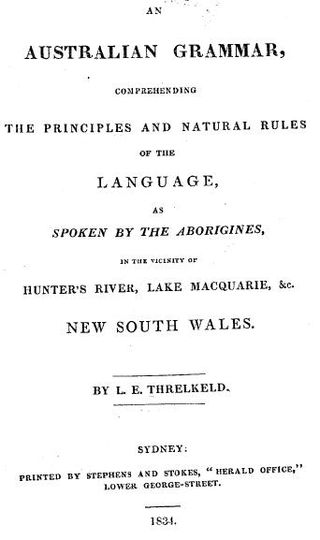
An Australian grammar : comprehending the principles and natural rules of the language, as spoken by the Aborigines in the vicinity of Hunter's River, Lake Macquarie, &c. New South Wales is a book written by Lancelot Edward Threlkeld and published in Sydney in 1834. It is a grammar of the Awabakal language.

Kuringgai is an ethnonym referring to an Indigenous Australian peoples occupying the territory between the southern borders of the Gamilaraay and the area around Sydney, and an historical people with its own distinctive language, located in part of that territory.
Lancelot Edward Threlkeld was an English missionary, primarily based in Australia. He was married twice and survived by sons and daughters from both marriages. Threlkeld is known for his work with Biraban in recording and publishing English translations of the Awabakal language.
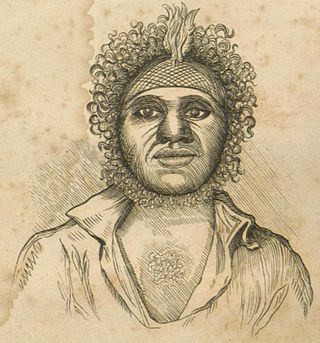
Biraban was a leader of the Awabakal people, an Aboriginal Australian people who lived in the area around what is today Lake Macquarie. His native name prior to Awabakal initiation was We-pohng; his naming as Biraban is reference to his totemic relationship with the eaglehawk.

Joseph Lycett was a portrait and miniature painter, active in Australia. Transported to Australia for forging banknotes, Lycett found work in the colony as a painter specialised in topographical views of the major towns of Australia, and some of its more dramatic landscapes.
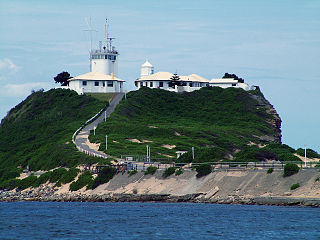
Nobbys Head is a headland located on the southern entrance to Newcastle Harbour, New South Wales, Australia. The headland is situated above the Hunter River and the Tasman Sea of the South Pacific Ocean.
Richard Browne was an artist and illustrator who was transported from his native Ireland to what was then the colony of New South Wales, Australia. After his sentence was completed in Newcastle in 1817 he lived in Sydney selling watercolour illustrations of natural history subjects — particularly birds — and of Indigenous Australians.
Archaeological evidence indicates that human beings have inhabited the area around Newcastle, New South Wales for at least 6500 years. In 2009, archaeologist uncovered over 5,534 Aboriginal artefacts, representing three occupation periods. In the 1820s, the Reverend Lancelot Threlkeld worked with local Awabakal man Biraban to record the Awabakal language. Since 1892, the Indigenous people of Newcastle have come to be known as the Awabakal.

The Sydney punchbowls, made in China during the Jiaqing Emperor's reign (1796–1820) over the mid-Qing dynasty, are the only two known examples of Chinese export porcelain hand painted with Sydney scenes and dating from the Macquarie era. The bowls were procured in Canton about three decades after the First Fleet's arrival at Port Jackson where the British settlement at Sydney Cove was established in 1788. They also represent the trading between Australia and China via India at the time. Even though decorated punchbowls were prestigious items used for drinking punch at social gatherings during the 18th and 19th centuries, it is not known who originally commissioned these bowls or what special occasion they were made for.

Government Cottage Archaeological Site is the heritage-listed site of a cottage which served alternately as the base for the Colony of New South Wales' commandant of the Hawkesbury district, house of the district's magistrate and an "informal official residence" for the Governor of New South Wales when in the district. It is located at 41 George Street, Windsor, City of Hawkesbury, New South Wales, Australia. The original house was built from 1796 to 1815 and demolished c. 1920-21. It was also known as Commandant's House and Government House. It was added to the New South Wales State Heritage Register on 4 February 2011.

Corroboree at Newcastle is a painting in the collection of the State Library of New South Wales located in Sydney, New South Wales, Australia. It is the first known European oil painting to depict a night corroboree by Aboriginal Australian people.

Newcastle Government House is a heritage-listed former military post and official residence and now park and psychiatric hospital at 72 Watt Street, Newcastle, New South Wales, Australia. It is also known as Newcastle Government House and Domain, Newcastle Military Barracks & Hospital, Girls' Industrial School, Reformatory for Girls, Lunatic Asylum for Imbeciles, James Fletcher Hospital and Fletcher Park. It was added to the New South Wales State Heritage Register on 22 March 2011.

From the late 1700s until the end of the 19th century, the British Empire established, expanded and maintained a number of colonies on the continent of Australia. These colonies included New South Wales, Van Diemen's Land, Western Australia, South Australia, Victoria and Queensland. Many of these were initially formed as penal settlements, and all were built on land occupied by Indigenous Australians. In order to keep the large number of transported convicts under control, enforce colonial law and fight the Australian frontier wars, British military elements, including the British Army, were deployed and garrisoned in Australia. From 1790 to 1870 over 30 different regiments of the British Army consisting of a combined total of around 20,000 soldiers were based in the Australian British colonies.

The Macquarie Chest is an early 19th century wooden chest, with provenance traced to Newcastle, New South Wales, as well as to Governor Lachlan Macquarie. The Chest displays natural history specimens and contains twelve panels painted by convict artist Joseph Lycett, eight of the panels show views of Newcastle. The Chest was most likely completed in August 1818 and given to Governor Macquarie and Mrs Macquarie as a gift. The Chest was purchased by William Dixson in London in 1937. The Chest is part of the collection of the State Library of New South Wales.
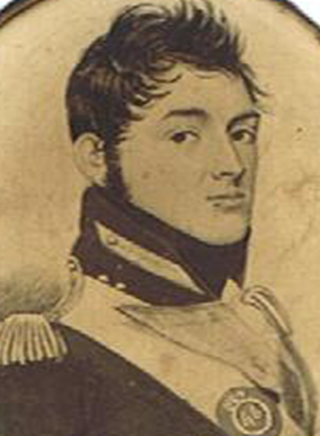
Major James Wallis was an Anglo-Irish military officer who served in the 46th Regiment of Foot. Wallis saw service in Dominica, New South Wales, and India. During his deployment in New South Wales, he commanded a detachment of grenadiers which committed the Appin Massacre of 1816, and was later promoted to the post of Commandant at the convict settlement of Newcastle from 1816 to 1818. Wallis is also noted for producing a number of historically significant sketches and paintings during his colonial military career.
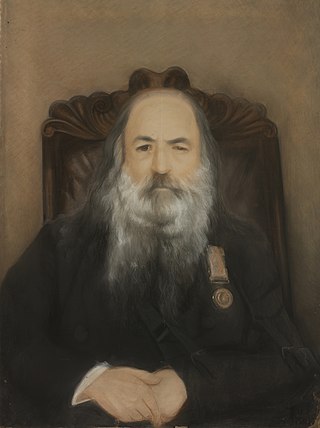
Francis Allman was a commissioned officer of the British Army and was born in County Clare, Ireland on 1 November 1780. He enlisted as an ensign in the Queen's Royal Regiment of Foot with his brother John in 1794.

Bob Barrett or Monunggal was a notable Awabakal Indigenous Australian from the area around Lake Macquarie and Newcastle, New South Wales. He was a trusted part of the British military establishment at the Newcastle and Port Macquarie convict settlements, where he was employed in the tracking and capture of escaped convicts. He was also involved in a famous court case which set a precedent for legal pluralism in Australia, and was later given a non-commissioned officer rank in an abortive Aboriginal paramilitary unit designed to engage with Aboriginal Tasmanians resisting British colonisation.
















